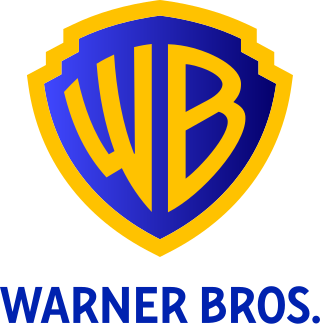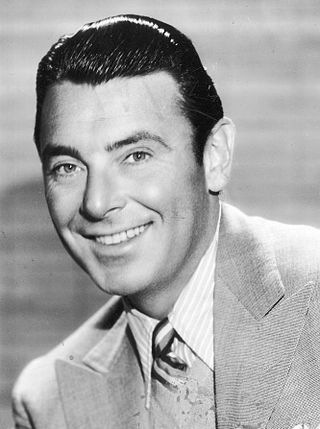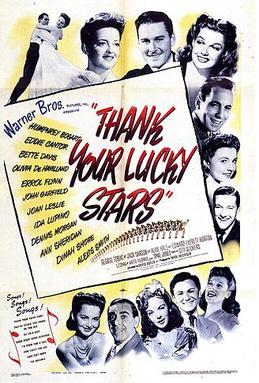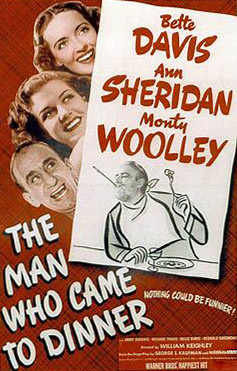
Warner Bros. Entertainment Inc. is an American film and entertainment studio headquartered at the Warner Bros. Studios complex in Burbank, California, and a subsidiary of Warner Bros. Discovery (WBD). Founded in 1923 by four brothers, Harry, Albert, Sam, and Jack Warner, the company established itself as a leader in the American film industry before diversifying into animation, television, and video games, and is one of the "Big Five" major American film studios, as well as a member of the Motion Picture Association (MPA).

Ruth Elizabeth "Bette" Davis was an American actress of film, television, and theater. Regarded as one of the greatest actresses in Hollywood history, she was noted for her willingness to play unsympathetic, sardonic characters and was known for her performances in a range of film genres, from contemporary crime melodramas to historical and period films and occasional comedies, although her greatest successes were her roles in romantic dramas. She won the Academy Award for Best Actress twice, was the first person to accrue ten Academy Award nominations for acting, and was the first woman to receive a Lifetime Achievement Award from the American Film Institute. In 1999, Davis was placed second on the American Film Institute's list of the greatest female stars of classic Hollywood cinema.

Errol Leslie Thomson Flynn was an Australian-American actor who achieved worldwide fame during the Golden Age of Hollywood. He was known for his romantic swashbuckler roles, frequent partnerships with Olivia de Havilland, and reputation for his womanising and hedonistic personal life. His most notable roles include Robin Hood in The Adventures of Robin Hood (1938), which was later named by the American Film Institute as the 18th-greatest hero in American film history, the lead role in Captain Blood (1935), Major Geoffrey Vickers in The Charge of the Light Brigade (1936), and the hero in a number of Westerns such as Dodge City (1939), Santa Fe Trail, Virginia City and San Antonio (1945).
Irving Rapper was a British-born American film director.

Now, Voyager is a 1942 American drama film starring Bette Davis, Paul Henreid, and Claude Rains, and directed by Irving Rapper. The screenplay by Casey Robinson is based on the 1941 novel of the same name by Olive Higgins Prouty.

George Brent was an Irish-American stage, film, and television actor. He is best remembered for the eleven films he made with Bette Davis, which included Jezebel and Dark Victory.
Satan Met a Lady is a 1936 American detective film directed by William Dieterle and starring Bette Davis and Warren William.

Margaret Lindsay was an American film actress. Her time as a Warner Bros. contract player during the 1930s was particularly productive. She was noted for her supporting work in successful films of the 1930s and 1940s such as Baby Face, Jezebel (1938) and Scarlet Street (1945) and her leading roles in lower-budgeted B movie films such as the Ellery Queen series at Columbia in the early 1940s. Critics regard her portrayal of Nathaniel Hawthorne's Hepzibah Pyncheon in the 1940 film The House of the Seven Gables as Lindsay's standout career role.

The Hollywood Canteen operated at 1451 North Cahuenga Boulevard in the Los Angeles, California, neighborhood of Hollywood between October 3, 1942 and November 22, 1945, as a club offering food, dancing, and entertainment for enlisted men and women, who were usually on their way overseas during World War II. Even though the majority of visitors were US servicemen, the canteen was open to allied countries as well as women in all branches of service. Their tickets for admission were just their uniforms, and everything at the canteen was free of charge.
Puppetoons is a series of animated puppet films made in Europe (1930s) and in the United States (1940s) by George Pal. They were made using replacement animation: using a series of different hand-carved wooden puppets for each frame in which the puppet moves or changes expression, rather than moving a single puppet, as is the case with most stop motion puppet animation. They were particularly made from 1932-1948, in both Europe and the US.

John Nicholas "Dick" Foran was an American actor and singer, known for his performances in Western musicals and for playing supporting roles in dramatic pictures. He appeared in dozens of movies of every type during his lengthy career, often with top stars leading the cast.

Thank Your Lucky Stars is a 1943 American musical comedy film made by Warner Brothers as a World War II fundraiser, with a slim plot involving theater producers. The stars donated their salaries to the Hollywood Canteen, which was founded by John Garfield and Bette Davis, who appear in this film. It was directed by David Butler and stars Eddie Cantor, Dennis Morgan, Joan Leslie, Edward Everett Horton and S.Z. Sakall.

In This Our Life is a 1942 American drama film, the second to be directed by John Huston. The screenplay by Howard Koch is based on the 1941 Pulitzer Prize-winning novel of the same title by Ellen Glasgow. The cast included the established stars Bette Davis and Olivia de Havilland as sisters and rivals in romance and life. Raoul Walsh also worked as director, taking over when Huston was called away for a war assignment after the United States entered World War II, but he was uncredited. This film was the third of six films that de Havilland and Davis starred in together.

The Man Who Played God is a 1932 American pre-Code drama film produced by Darryl F. Zanuck and directed by John G. Adolfi. George Arliss stars as a concert pianist embittered by the loss of his hearing, who eventually finds redemption by helping others; it also features a then little-known Bette Davis as the much younger woman engaged to the protagonist.
Ernest Jacob HallerASC, sometimes known as Ernie J. Haller, was an American cinematographer.

The Man Who Came to Dinner is a 1942 American screwball comedy film directed by William Keighley, and starring Bette Davis, Ann Sheridan and, as the titular character, Monty Woolley. The screenplay by Julius and Philip G. Epstein is based on the 1939 play The Man Who Came to Dinner by Moss Hart and George S. Kaufman. The supporting cast features Jimmy Durante and Billie Burke.

Hollywood Canteen is a 1944 American musical romantic comedy film starring Joan Leslie, Robert Hutton, Dane Clark and features many stars in cameo roles. and produced by Warner Bros. The film was written and directed by Delmer Daves and received three Oscar nominations.

Theresa Mae Harris was an American television and film actress, singer and dancer.
Jasper Goes Hunting is an animated short film in the Puppetoons series, directed by George Pal and first released on July 29, 1944. The short was distributed by Paramount Pictures.
Malibu Beach Party is a 1940 Warner Bros. Merrie Melodies cartoon directed by Friz Freleng. The short was released on September 14, 1940.














